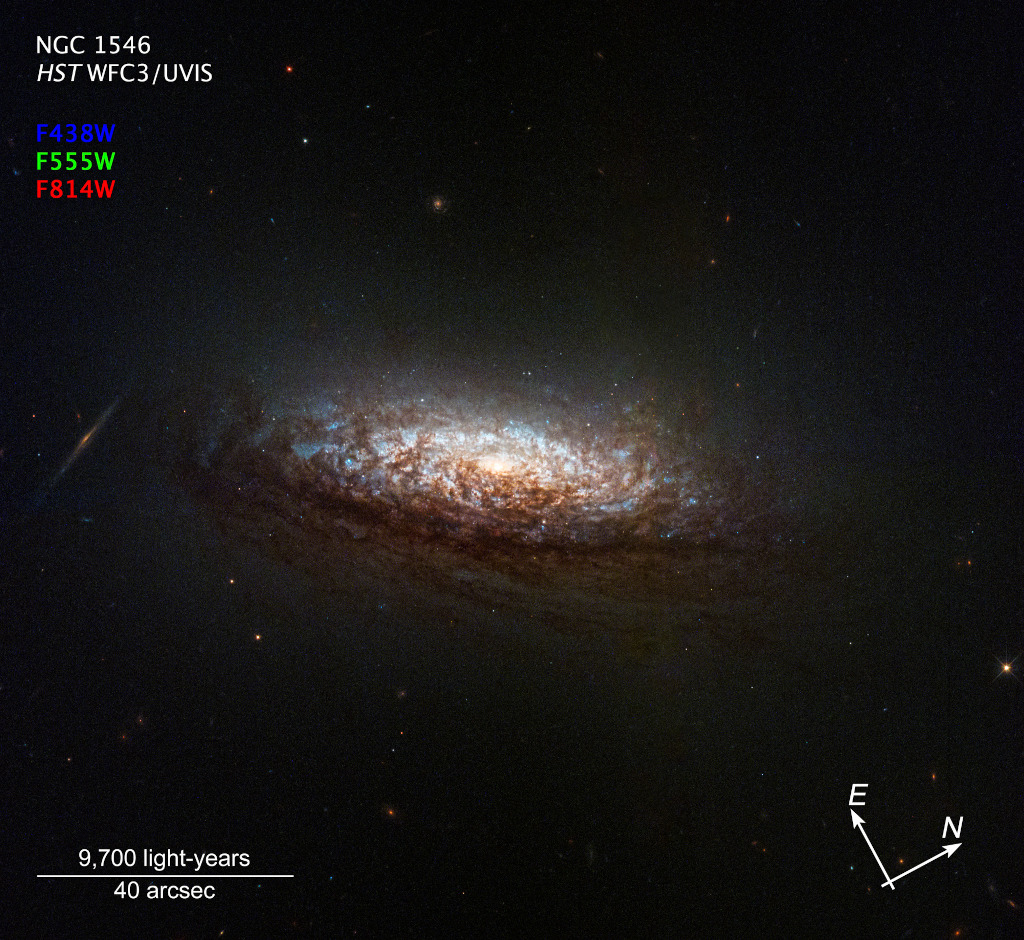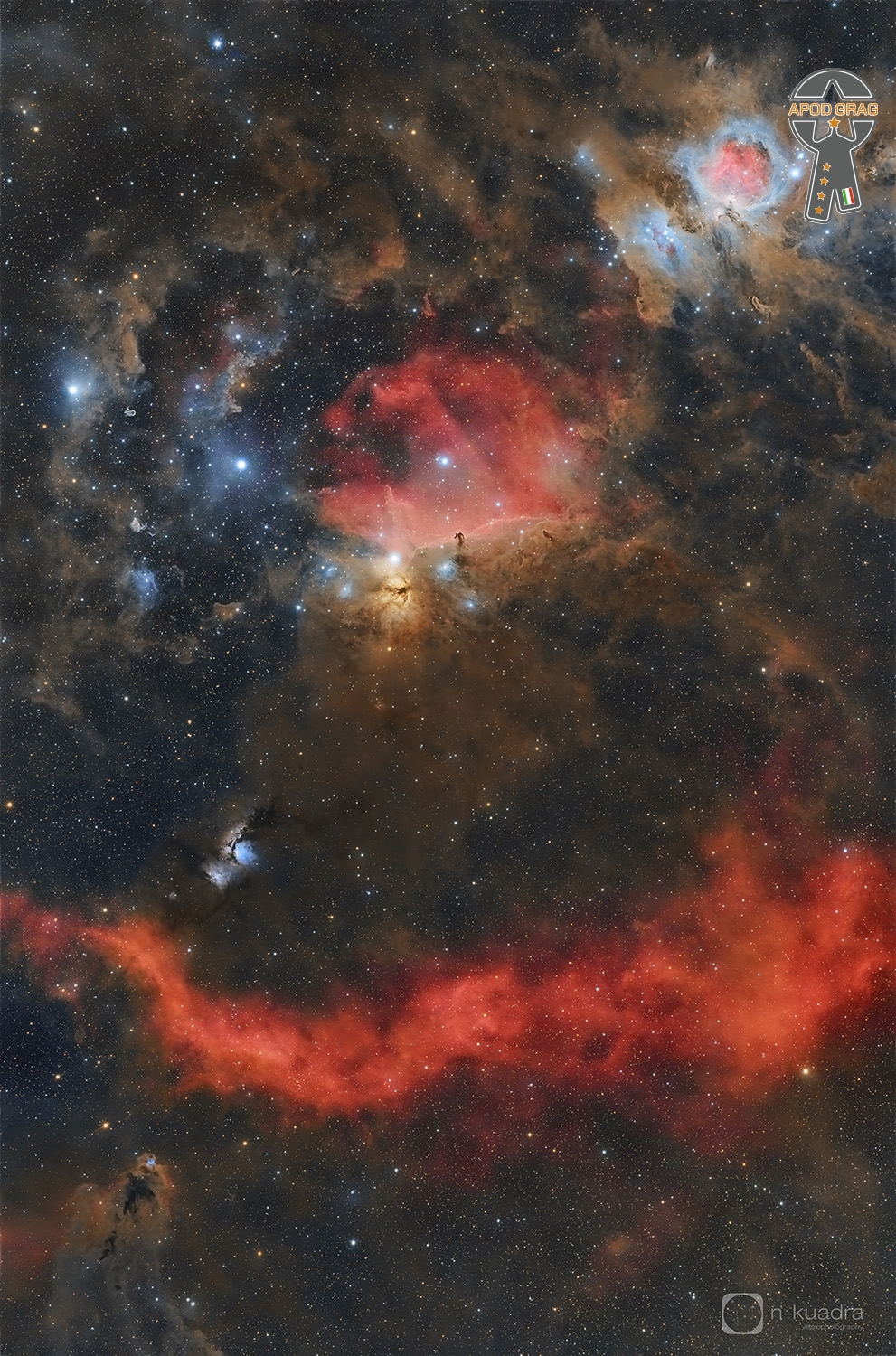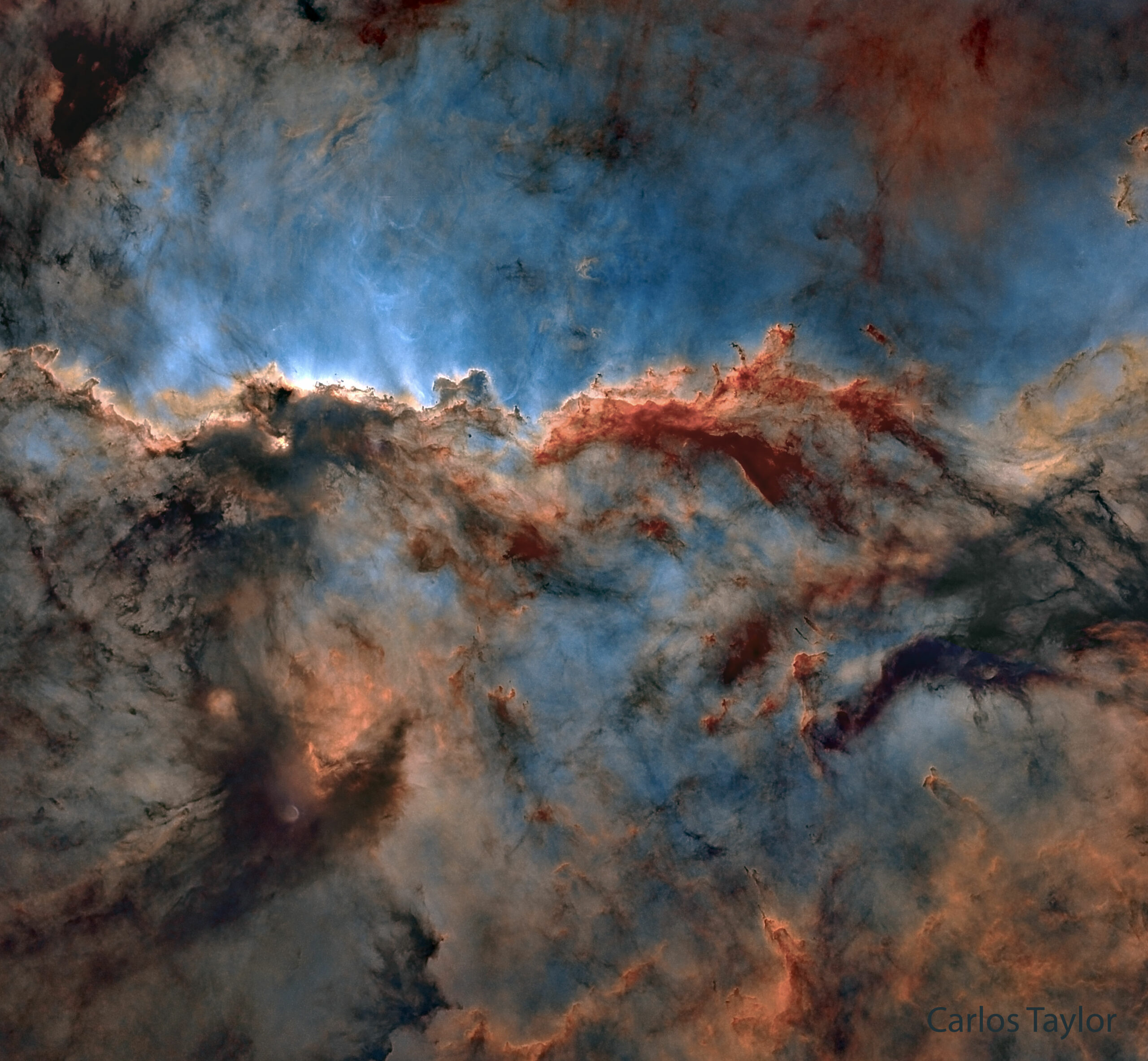Blog
Erev Shabbat Pride Service with Guest Speaker Jae Bates
Friday 6-21-24 Music with Inbal Sharett-Singer, Jayson Rodovsky, Jeff Bailey, Pete Whitman and mick LaBriola.
more...Returning to science operations on June 14, the Hubble Space Telescope used its new pointing mode to capture this sharp image of spiral galaxy NGC 1546. A member of the Dorado galaxy group, the island universe lies a mere 50 million light-years away. The galactic disk of NGC 1546 is tilted to our line-of-sight, with the yellowish light of the old stars and bluish regions of newly formed stars shining through the galaxy’s dust lanes. More distant background galaxies are scattered throughout this Hubble view. Launched in 1990, Hubble has been exploring the cosmos for more than three decades, recently celebrating its 34th anniversary.

Nils Hilmer Lofgren (born June 21, 1951) is an American rock musician, recording artist, songwriter, and multi-instrumentalist. Along with his work as a solo artist, he has been a member of Bruce Springsteen‘s E Street Band since 1984, a member of Crazy Horse, and founder/frontman of the band Grin. Lofgren was inducted into the Rock and Roll Hall of Fame as a member of the E Street Band in 2014. Lofgren was born in Chicago, Illinois, United States, to an Italian mother and a Swedish father. When he was a young child, the family moved to the Washington, D.C., suburb of Bethesda, Maryland. Lofgren’s first instrument was classical accordion, beginning at age five, which he studied seriously for ten years. After studying classical music and jazz, throughout his youth, Lofgren switched his emphasis to rock music, and focused on the piano and the guitar.
more...Maria Rosa Marco Poquet (Catalan pronunciation: [məˈɾi.ə ˈrɔzə ˈmaɾku puˈkɛt]; born 21 June 1939), better known by her stage name
Salomé (Catalan: [səluˈme], Spanish:[saloˈme]), is a Spanish singer.
Salomé was born in Barcelona, Spain. She was one of the four winners of the Eurovision Song Contest 1969 with the song “Vivo cantando“.
She began her career in Radio Barcelona. Since then, she has continued her musical career combining it with television appearances as hostess. She has performed as opening act for Frank Sinatra. By 1963 she had recorded more than forty songs for record companies Iberofón and Zafiro. In 1963 she won the 5th Festival de la Canción Mediterránea de Barcelona music contest with her song in Catalan, “Se’n va anar.
more...Boris Claudio “Lalo” Schifrin (born June 21, 1932) is an Argentine-American pianist, composer, arranger, and conductor. He is best known for his large body of film and TV scores since the 1950s, incorporating jazz and Latin American musical elements alongside traditional orchestrations. He is a five-time Grammy Award winner; he has been nominated for six Academy Awards and four Emmy Awards.
Schifrin’s best known compositions include the themes from Mission: Impossible and Mannix, as well as the scores to Cool Hand Luke (1967), Bullitt (1968), THX 1138(1971), Enter the Dragon (1973), The Four Musketeers (1974), Voyage of the Damned(1976), The Eagle Has Landed (1976), The Amityville Horror (1979), and the Rush Hourtrilogy (1998–2007). Schifrin is also noted for his collaborations with Clint Eastwoodfrom the late 1960s to the 1980s, particularly the Dirty Harry series of films. He composed the Paramount Pictures fanfare used from 1976 to 2004.
In 2019, he received an honorary Oscar “in recognition of his unique musical style, compositional integrity and influential contributions to the art of film scoring.”
more...The Orion constellation is a celestial treasure. It houses iconic nebulae such as the Horsehead and Flame, the Boogeyman, m78 among many others, highlighting the complexity of star formation. The three stars of Orion’s belt, together with the Orion Nebula, complete this captivating astronomical setting. Its cosmic wonders invite you to explore the richness and beauty of the nocturnal universe.

Chester Burton Atkins (June 20, 1924 – June 30, 2001 Luttrell, Tennessee), also known as “Mr. Guitar” and “The Country Gentleman“, was an American musician who, along with Owen Bradley and Bob Ferguson, helped create the Nashville sound, the country music style which expanded its appeal to adult pop music fans. He was primarily a guitarist, but he also played the mandolin, fiddle, banjo, and ukulele, and occasionally sang.
Atkins’s signature picking style was inspired by Merle Travis. Other major guitar influences were Django Reinhardt, George Barnes, Les Paul, and, later, Jerry Reed.His distinctive picking style and musicianship brought him admirers inside and outside the country scene, both in the United States and abroad. Atkins spent most of his career at RCA Victor and produced records for the Browns, Hank Snow, Porter Wagoner, Norma Jean, Dolly Parton, Dottie West, Perry Como, Floyd Cramer, Elvis Presley, the Everly Brothers, Eddy Arnold, Don Gibson, Jim Reeves, Jerry Reed, Skeeter Davis, Waylon Jennings, Roger Whittaker, Ann-Margret and many others.
Rolling Stone credited Atkins with inventing the “popwise ‘Nashville sound’ that rescued country music from a commercial slump” and ranked him number 21 on their list of “The 100 Greatest Guitarists of All Time”. In 2023, Atkins was named the 39th best guitarist of all time. Among many other honors, Atkins received 14 Grammy Awards and the Grammy Lifetime Achievement Award. He also received nine Country Music Associationawards for Instrumentalist of the Year. He was inducted into the Rock and Roll Hall of Fame, the Country Music Hall of Fame and Museum, and the Musicians Hall of Fame and Museum. George Harrison was also inspired by Chet Atkins; early Beatles songs such as “All My Loving” show the influence.
more...Eric Allan Dolphy Jr. (June 20, 1928 – June 29, 1964) was an American jazz multi-instrumentalist and bandleader. Primarily an alto saxophonist, bass clarinetist, and flautist, Dolphy was one of several multi-instrumentalists to gain prominence during the same era. His use of the bass clarinet helped to establish the unconventional instrument within jazz. Dolphy extended the vocabulary and boundaries of the alto saxophone, and was among the earliest significant jazz flute soloists.
His improvisational style was characterized by the use of wide intervals, in addition to employing an array of extended techniques to emulate the sounds of human voices and animals. He used melodic lines that were “angular, zigzagging from interval to interval, taking hairpin turns at unexpected junctures, making dramatic leaps from the lower to the upper register.” Although Dolphy’s work is sometimes classified as free jazz, his compositions and solos were often rooted in conventional (if highly abstracted) tonal bebop harmony.
Dolphy was born and raised in Los Angeles. His parents were Sadie and Eric Dolphy, Sr., who immigrated to the United States from Panama. He began music lessons at age six, studying clarinet and saxophone privately. While still in junior high, he began to study the oboe, aspiring to a professional symphonic career, and received a two-year scholarship to study at the music school of the University of Southern California. On June 27, 1964, Dolphy traveled to Berlin to play with a trio led by Karl Berger at the opening of a jazz club called The Tangent.He was apparently seriously ill when he arrived, and during the first concert was barely able to play. He was hospitalized that night, but his condition worsened. On June 29, Dolphy died after falling into a diabetic coma. While certain details of his death are still disputed, it is largely accepted that he fell into a coma caused by undiagnosed diabetes. The liner notes to the Complete Prestige Recordings box set say that Dolphy “collapsed in his hotel room in Berlin and when brought to the hospital he was diagnosed as being in a diabetic coma. After being administered a shot of insulin he lapsed into insulin shock and died”.
more...These dragons are illusions made of thin gas and dust. The emission nebula NGC 6188, home to the glowing clouds, is found about 4,000 light years away near the edge of a large molecular cloud, unseen at visible wavelengths, in the southern constellation Ara (the Altar). Massive, young stars of the embedded Ara OB1 association were formed in that region only a few million years ago, sculpting the dark shapes and powering the nebular glow with stellar winds and intense ultraviolet radiation. The recent star formation itself was likely triggered by winds and supernova explosions from previous generations of massive stars, that swept up and compressed the molecular gas. This impressively detailed image spans over 2 degrees (four full Moons), corresponding to over 150 light years at the estimated distance of NGC 6188.

more...
More Posts
- Hank Crawford Day
- World Music with Antonio José Cortés Pantoja “Chiquetete”
- Daily Roots with Trinity
- HAIR a tribal musical January 31st thru February 10th 2019
- The Cosmos with M94
- Larry Willis Day
- Cousin Joe Day
- World Music with Malou Beauvoir
- Daily Roots with Cecil McDonald
- The Cosmos with NGC 1222
- Kermit Ruffins Day
- Lenny White Day
- Professor Longhair Day
- Bobby Timmons Day
- World Music with Red Baraat
- Daily Roots with Marcia Griffiths
- The Cosmos with M98
- Keith Richards Day
- Eddie “Cleanhead” Vinson Day
- Harold Land Day



